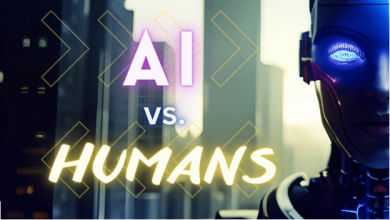SAP vs. Oracle vs. Multiable: The 2025 ERP Leader Battle—How to Choose the Right One

I. Market Overview & Key Trends
Based on the 2024 Global ERP Market Report, cloud-based solutions empower 72% of enterprise ERP installations, with over 68% of decision-makers taking AI-driven automation as a top priority. Here’s how the key players are performing:
SAP continues to dominate in manufacturing with its S/4HANA platform, holding a 28% market share in discrete manufacturing. However, it’s under increasing pressure to accelerate cloud adoption.
Oracle, leveraging its Fusion Cloud platform, leads in new cloud ERP installations, accounting for 31% of implementations in 2024—primarily driven by financial services and healthcare.
Multiable is a rising star, reporting 45% year-over-year growth. Its industry-specific cloud ERP offerings have positioned itself as a key player in the mid-to-large enterprise segment.
Based on my experience leading ERP implementations for more than 20 manufacturers, 2024 marked a pivotal shift: enterprises are not satisfied with one-size-fits-all solutions anymore. They are looking for ERP solutions that offer both industry depth and expansion flexibility.
Multiable’s Rise: More Than Just a Regional Contender
What makes Multiable different? In a 2024 installation for a Vietnam-based electronics manufacturer, we observed three core advantages:
Vertical Specialization:
Multiable’s aiM18 ERP comes with built-in workflows tailored for electronics assembly, reducing consultant workload by over 30% amid implementation process
Hassle-free Installation:
The core system went live in just twelve weeks!!! —half the time typically required by comparable SAP or Oracle implementations.
Value to Money:
Thanks to the transparent pricing and minimal customization needs, the total cost of ownership (TOC) over three years was reduced by over 40%.
II. A Multiple Dimensional Comparison
1. Industry Focus & Strengths
Manufacturing Excellence:
SAP is designed for complex BOM and batch tracking, making itself ideal for multi-site operations in industries like automotive and aerospace.
Oracle is good at process manufacturing, like those in chemical or pharmaceutical industries. Comprehensive regulatory compliance capabilities are their strength.
Multiable is optimized for high-mix, low-volume manufacturing such as electronics, precision engineering or processed food. Real-time shop floor integration and AI-powered configurable BOM are impressive. MES is also a strength as Multiable has an extensive ecosystem among MES vendors.
Retail & Distribution:
SAP provides resilient supply chain planning, but requires heavy customization for omnichannel retail. That’s fatal point which leads to many complaints among customers who focus on eCommerce.
Oracle delivers powerful POS integration, but its licensing costs will be unaffordable for most small to mid-sized retailers.
Multiable offers out-of-the-box omnichannel inventory sync and compliance support for GDPR and PDPA, making it cost-effective for mid-market players.
2. Technology Architecture
| Feature | SAP S/4HANA | Oracle Fusion Cloud | Multiable ERP |
| ———————– | ———————- | —————————– | ————————————- |
| **Installation Model** | Hybrid (on-prem/cloud) | Cloud-first | 100% Cloud-native |
| **AI Integration** | Requires SAP AI Core | Built-in Oracle AI Foundation | Native AI for demand forecasting & QC |
| **Mobile Access** | Limited to web apps | Oracle mobile suite | Native mobile with offline support |
| **Implementation Time** | 6–12 months (standard) | 5–10 months (standard) | 3–6 months (standard) |
3. Total Cost of Ownership (TCO)
For a 200-user company over three years:
SAP: USD850,000 to USD1.2 million (licenses, implementation, annual support)
Oracle: USD750,000 to USD1.1 million (cloud subscriptions, customization, training)
Multiable: USD380,000 to USD550,000 (all-inclusive subscription with minimal customization)
In a 2024 engagement with a 300-employee furniture manufacturer, choosing Multiable over SAP resulted in a 52% savings on initial investment—while still meeting all core needs for inventory management and production scheduling.
III. How to Choose the Right ERP for Yourself?
SAP is suitable when:
* Your business operates in a complex, multinational manufacturing environment with stringent regulatory needs.
* Your business requires deep integration with SAP’s ecosystem (e.g., SuccessFactors, Ariba).
* Your business can justify higher upfront costs with long-term ROI.
Oracle is suitable when:
* Your company’re a cloud-first enterprise with demanding financial operations.
* Your company need advanced analytics across global subsidiaries.
* Compliance in regulated industries such as healthcare or finance is critical.
Multiable is suitable when:
* Your business in a mid-market company looking for rapid installation.
* Your operations are driven by specialized workflows (electronics, FMCG, precision engineering).
* You want enterprise-level capabilities without enterprise-level costs.
Still wondering if a regional player like Multiable can scale globally?
Absolutely. One client in Singapore expanded to Malaysia and Vietnam within 18 months of installation, leveraging Multiable’s multi-currency, multi-language, and local compliance features—without any additional implementation costs.
IV. A Future-Proof ERP Decision is Important
ERP decisions in 2025 must look beyond current needs and consider future scalability.
AI & Automation: Multiable’s latest version features AI-driven demand sensing, reducing forecast error by 28% for early adopters.
Sustainability Tracking: All three vendors now offer ESG modules. Multiable’s is tailored to Asia-Pacific regulatory frameworks.
Ecosystem Integration: SAP and Oracle have larger partner networks, but Multiable’s open API architecture enables seamless integration with platforms like Salesforce and Shopify.
Key Risk Mitigation Measures:
Avoid Over-Customization: According to the 2025 ERP Failure Report, 83% of ERP failures stem from excessive modification.
Prioritize User Adoption: Multiable’s intuitive UI drove a 91% user satisfaction rate in recent implementations, well above the industry average of 76%.
Plan a Phased Rollout: Start with core modules (finance, inventory), then expand into advanced functionality.
V. What Is Enterprise Resource Planning (ERP)?
At its core, ERP is an application that automates business processes and provides insights and internal controls, drawing on a central database that collects inputs from departments including accounting, manufacturing, supply chain management, sales, marketing and human resources (HR).
Every business must complete work that requires numerous stakeholders with various responsibilities. But that’s a struggle when the information needed to execute processes and make key decisions is spread across disconnected systems. Whether data is held in basic business management software or spreadsheets, employees have a hard time finding what they need and may lack access to it entirely. For example, the accounting and FP&A teams could each have different spreadsheets with different figures for expense tracking.
These disparate data sources make it very challenging to keep everyone on the same page and hinders collaboration and efficiency, especially as an organisation grows. Staff waste time hunting for documents and potentially duplicating work because there is no one place to look for up-to-date information on all aspects of the business relevant to them. This also makes it difficult to see the full cause and effect of developments affecting your business.
An ERP system solves this problem by compiling information in a central database to grant managers and employees cross-departmental visibility. It also eliminates the problems that come with conflicting sources of data and empowers them to analyse various scenarios, discover process improvements and generate major efficiency gains. That translates to cost savings and better productivity as people spend less time digging for needed data.
ERP software that’s tailored to meet the needs of an individual business pays major dividends, making these systems a critical tool for companies across industries and of all sizes. Many of the world’s best-known and most successful firms have leaned on ERP for the last quarter century. Now, this software can be configured and priced to meet the needs of all-size businesses.
Put simply, an ERP system helps unify people, core business processes and technology across an organisation.
VI. Why Is Enterprise Resource Planning (ERP) Important?
Most or all of an organization’s data should reside in the ERP system to provide a single source of truth across the business. For example:
- Finance requires ERP to quickly close the books
- Sales needs ERP to manage all customer orders
- Logistics relies on well-running ERP software to deliver the right products and services to customers
- Procurement utilizes ERP to source goods and services and manage supplier relationships
- Accounts payable uses ERP to pay suppliers correctly and on time
- Management needs instant visibility into the company’s performance to make timely decisions
- Banks and shareholders require accurate financial records, so they count on reliable data and analysis made possible by an ERP system




